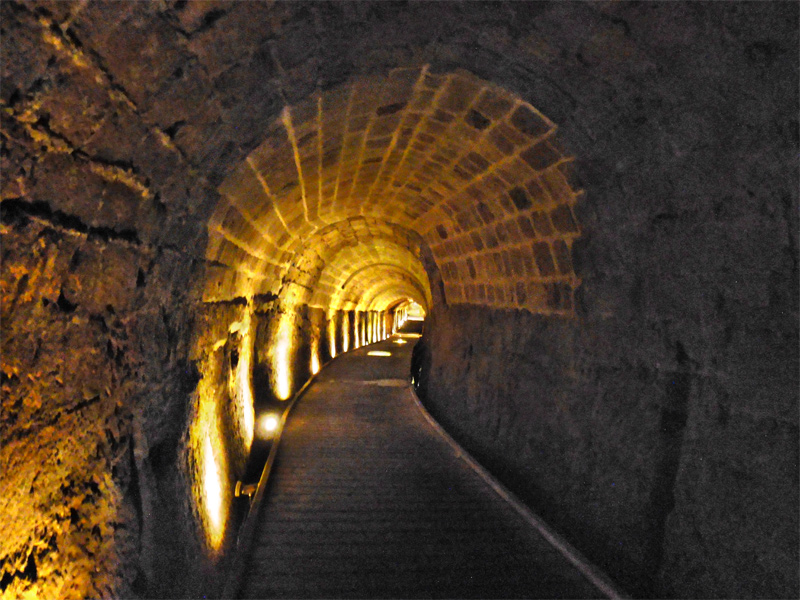|
Sibylla Of Jerusalem
Sibylla (; – 25 July 1190) was the queen of Jerusalem from 1186 to 1190. She reigned alongside her husband Guy of Lusignan, to whom she was unwaveringly attached despite his unpopularity among the barons of the Kingdom of Jerusalem. Sibylla was the eldest daughter of King Amalric and the only daughter of his first wife, Agnes of Courtenay. Her father died in 1174, making her heir presumptive to her younger brother, King Baldwin IV; when it became clear that the 13-year-old king had contracted leprosy, the matter of Sibylla's marriage became urgent. The regent, Count Raymond III of Tripoli, arranged for her to marry William Longsword of Montferrat in late 1176, but within a year, William died, leaving her pregnant and in possession of the County of Jaffa and Ascalon. Shortly after giving birth to a son, King Baldwin V, Baldwin, Sibylla came to be associated with her brother in public acts, thereby being designated as next in line to the throne. Sibylla's second marriage to Guy ... [...More Info...] [...Related Items...] OR: [Wikipedia] [Google] [Baidu] |
Regent
In a monarchy, a regent () is a person appointed to govern a state because the actual monarch is a minor, absent, incapacitated or unable to discharge their powers and duties, or the throne is vacant and a new monarch has not yet been determined. The rule of a regent or regents is called a regency. A regent or regency council may be formed ''ad hoc'' or in accordance with a constitutional rule. ''Regent'' is sometimes a formal title granted to a monarch's most trusted advisor or personal assistant. If the regent is holding the position due to their being in the line of succession, the compound term '' prince regent'' is often used; if the regent of a minor is their mother, and she is wife or widow of the king, she would be referred to as ''queen regent''. If the formally appointed regent is unavailable or cannot serve on a temporary basis, a may be appointed to fill the gap. In a monarchy, a regent usually governs due to one of these reasons, but may also be elected to ... [...More Info...] [...Related Items...] OR: [Wikipedia] [Google] [Baidu] |
King Of Jerusalem
The king or queen of Jerusalem was the supreme ruler of the Kingdom of Jerusalem, a Crusader state founded in Jerusalem by the Latin Church, Latin Catholic leaders of the First Crusade, when the city was Siege of Jerusalem (1099), conquered in 1099. Most of them were men, but there were also List of queens of Jerusalem#Queens regnant of Jerusalem, five queens regnant of Jerusalem, either reigning alone ''suo jure'' ("in her own right"), or as coregency, co-rulers of husbands who reigned as kings of Jerusalem ''jure uxoris'' ("by right of his wife"). Godfrey of Bouillon, the first ruler of the Kingdom of Jerusalem, refused the title of king choosing instead the title , that is Advocate or Defender of the Church of the Holy Sepulchre. In 1100 Baldwin I of Jerusalem, Baldwin I, Godfrey's successor, was the first ruler crowned as king. The crusaders in Jerusalem were Siege of Jerusalem (1187), conquered in 1187, but their Kingdom of Jerusalem survived, moving the capital to Acre, Is ... [...More Info...] [...Related Items...] OR: [Wikipedia] [Google] [Baidu] |
Baldwin IV Of Jerusalem
Baldwin IV (1161–1185), known as the Leper King, was the king of Jerusalem from 1174 until his death in 1185. He was admired by historians and his contemporaries for his dedication to the Kingdom of Jerusalem in the face of his debilitating leprosy. Choosing competent advisers, Baldwin ruled a thriving crusader state and succeeded in protecting it from the Muslim ruler Saladin. Baldwin's parents, King Amalric and Agnes of Courtenay, separated when Baldwin was two. At nine years old, he was sent to be educated by Archbishop William of Tyre. William noticed preliminary symptoms of leprosy, but Baldwin was only diagnosed after he succeeded his father as king. Thereafter, his hands and face became increasingly disfigured. He mastered horse riding despite gradually losing sensation in his extremities and fought in battles until his last years. Miles of Plancy ruled the kingdom in Baldwin's name until the former was murdered, and Count Raymond III of Tripoli took over until the kin ... [...More Info...] [...Related Items...] OR: [Wikipedia] [Google] [Baidu] |
Count Of Jaffa And Ascalon
The double County of Jaffa and Ascalon was one of the four major seigneuries comprising the major Crusader state of the Kingdom of Jerusalem, according to 13th-century commentator John of Ibelin. History Jaffa was fortified by Godfrey of Bouillon after the First Crusade in 1100, and was unsuccessfully claimed by Daimbert of Pisa, the first Latin patriarch. It remained part of the royal domain until it was given to Hugh of Le Puiset in 1110. When Hugh II rebelled against King Fulk in 1134 the county was divided into a number of smaller holdings, and Jaffa itself became a royal domain. In 1151 it was designated as the apanage of King Baldwin III's younger brother, Amalric. After the siege of Ascalon in 1153, King Baldwin III conquered Ascalon, which was added to Amalric's territory.Runciman'', A History of the Crusades, Vol. II: The Kingdom of Jerusalem and the Frankish East, 1100-1187,'' pp. 339-340 Jaffa and Ascalon were then granted to close relatives of the monarch and pass ... [...More Info...] [...Related Items...] OR: [Wikipedia] [Google] [Baidu] |
Siege Of Acre (1189–1191)
The siege of Acre was the first significant counterattack by Guy of Lusignan, Guy of Jerusalem against Saladin, leader of the Muslims in Ayyubid dynasty, Syria and Egypt. This pivotal siege formed part of what later became known as the Third Crusade. The siege lasted from August 1189 until July 1191, at which time the city's coastal position meant the attacking Latin forces were unable to fully capture the city and Saladin was unable to fully relieve it, with both sides receiving supplies and resources by sea. It concluded as a key victory for the Crusaders and a serious setback for Saladin's ambition to destroy the Crusader states. Background Egypt was ruled by the Shia Islam, Shi'ite Fatimid Caliphate, Fatimid dynasty from 969, independent from the Sunni Islam, Sunni Abbasid Caliphate, Abbasid rulers in Baghdad and with a rival Shi'ite caliph—that is ''successor'' to the Muslim prophet Muhammad. Governance fell to the caliph's chief administrator called the vizier. Fro ... [...More Info...] [...Related Items...] OR: [Wikipedia] [Google] [Baidu] |
Acre, Israel
Acre ( ), known in Hebrew as Akko (, ) and in Arabic as Akka (, ), is a List of cities in Israel, city in the coastal plain region of the Northern District (Israel), Northern District of Israel. The city occupies a strategic location, sitting in a natural harbour at the extremity of Haifa Bay on the coast of the Mediterranean's Levantine Sea. In the Village Statistics, 1945, 1945 census Acre's population numbered 12,360; 9,890 Muslims, 2,330 Christians, 50 Jews and 90 classified as "other".Department of Statistics, 1945, p4Government of Palestine, Department of Statistics. ''Village Statistics, April, 1945.'' Quoted in Hadawi, 1970, p40 Acre Prison, Acre's fort was converted into a jail, where members of the Jewish underground were held during their struggle against the Mandate authorities, among them Ze'ev Jabotinsky, Shlomo Ben-Yosef, and Dov Gruner. Gruner and Ben-Yosef were executed there. Other Jewish inmates were freed by members of the Irgun, who Acre Prison break, brok ... [...More Info...] [...Related Items...] OR: [Wikipedia] [Google] [Baidu] |
Battle Of Hattin
The Battle of Hattin took place on 4 July 1187, between the Crusader states of the Levant and the forces of the Ayyubid sultan Saladin. It is also known as the Battle of the Horns of Hattin, due to the shape of the nearby extinct volcano of that name. The Muslim armies under Saladin captured or killed the vast majority of the Crusader forces, removing their capability to wage war. As a direct result of the battle, Muslims once again became the eminent military power in the Holy Land, re-capturing Jerusalem and most of the other Crusader-held cities and castles. These Christian defeats prompted the Third Crusade, which began two years after the Battle of Hattin. Location The battle took place near Tiberias in present-day Israel. The battlefield, near the village of Hittin, had as its chief geographic feature a double hill (the " Horns of Hattin") beside a pass through the northern mountains between Tiberias and the road from Acre to the east. The Roman road, known to ... [...More Info...] [...Related Items...] OR: [Wikipedia] [Google] [Baidu] |
Tyre, Lebanon
Tyre (; ; ; ; ) is a city in Lebanon, and one of the List of oldest continuously inhabited cities, oldest continuously inhabited cities in the world. It was one of the earliest Phoenician metropolises and the legendary birthplace of Europa (consort of Zeus), Europa, her brothers Cadmus and Phoenix (son of Agenor), Phoenix, and Carthage's founder Dido (Elissa). The city has many ancient sites, including the Tyre Hippodrome, and was added as a whole to the list of UNESCO World Heritage Sites in 1984. The historian Ernest Renan noted that "One can call Tyre a city of ruins, built out of ruins". Tyre is the fifth-largest city in Lebanon after Beirut, Tripoli, Lebanon, Tripoli, Sidon, and Baalbek. It is the capital of the Tyre District in the South Governorate. There were approximately 200,000 inhabitants in the Tyre urban area in 2016, including many refugees, as the city hosts three of the twelve Palestinian refugee camps in Lebanon: Burj el-Shamali, Burj El Shimali, El-Buss refugee ... [...More Info...] [...Related Items...] OR: [Wikipedia] [Google] [Baidu] |
Saladin
Salah ad-Din Yusuf ibn Ayyub ( – 4 March 1193), commonly known as Saladin, was the founder of the Ayyubid dynasty. Hailing from a Kurdish family, he was the first sultan of both Egypt and Syria. An important figure of the Third Crusade, he spearheaded the Muslim military effort against the Crusader states in the Levant. At the height of his power, the Ayyubid realm spanned Egypt, Syria, Upper Mesopotamia, the Hejaz, Yemen, and Nubia. Alongside his uncle Shirkuh, a Kurdish mercenary commander in service of the Zengid dynasty, Saladin was sent to Fatimid Egypt in 1164, on the orders of the Zengid ruler Nur ad-Din. With their original purpose being to help restore Shawar as the vizier to the teenage Fatimid caliph al-Adid, a power struggle ensued between Shirkuh and Shawar after the latter was reinstated. Saladin, meanwhile, climbed the ranks of the Fatimid government by virtue of his military successes against Crusader assaults and his personal closeness to al-Adid. A ... [...More Info...] [...Related Items...] OR: [Wikipedia] [Google] [Baidu] |
Bohemond III Of Antioch
Bohemond III of Antioch, also known as Bohemond the Child or the Stammerer (; 1148–1201), was Prince of Antioch from 1163 to 1201. He was the elder son of Constance of Antioch and her first husband, Raymond of Poitiers. Bohemond ascended to the throne after the Antiochene noblemen dethroned his mother with the assistance of the lord of Armenian Cilicia, Thoros II. He fell into captivity in the Battle of Harim in 1164, but the victorious Nur al-Din Zengi, (governor) of Aleppo released him to avoid coming into conflict with the Byzantine Empire. Bohemond went to Constantinople to pay homage to Manuel I Komnenos, who persuaded him to install a Greek Orthodox patriarch in Antioch. The Latin patriarch of Antioch, Aimery of Limoges, placed Antioch under Interdict (Catholic canon law), interdict. Bohemond restored Aimery only after the Greek patriarch died during an earthquake in 1170. Bohemond remained a close ally of the Byzantine Empire. He fought against the new lord of Armenian Ci ... [...More Info...] [...Related Items...] OR: [Wikipedia] [Google] [Baidu] |








